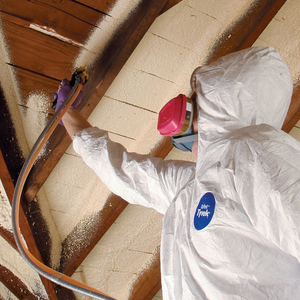
Q:
Recently, I had to remove a deck post on a 15-year-old house. It looked like the post had been attached with zinc fasteners instead of hot-dipped galvanized fasteners, so I removed one of the lag screws holding the beam to the post. Sure enough, it was zinc. I am going to replace the lag screws and may use FastenMaster Ledger Loks or the like. Can I use the same holes, or should I make new ones?
John Heneghan, via email, None
A:
Editorial adviser Mike Guertin replies: You can put new hot-dipped galvanized fasteners in old holes, provided the holes are not too big. In other words, you can only use fasteners that are the same size as or larger than the old fasteners. If you decide to go with structural screws such as LedgerLoks, keep in mind that there’s no need to drill pilot holes.
Fine Homebuilding Recommended Products
Fine Homebuilding receives a commission for items purchased through links on this site, including Amazon Associates and other affiliate advertising programs.

Cepco BoWrench Decking Tool

N95 Respirator

Angel Guard Deck Demon

























View Comments
I understood the question to be one of compatibility and I’d like to throw in my two cents. There are several misconceptions about galvanizing, zinc coatings and corrosion protection. A typical misconception being: “Oh it’s galvanized so it can’t corrode.”
Hot dipped galvanized fasteners are also zinc coated and their corrosion protection mechanism is exactly the same as that of so-called zinc fasteners – namely sacrificial. That’s why there wouldn’t be any compatibility issue if a hot dipped galvanized fastener is placed in a hole vacated by a so-called zinc fastener. After all, both are zinc coated steel, however, the zinc is applied in different processes.
What the questioner refers to as zinc fasteners are steel fasteners that have a zinc coating applied in an electro-galvanic process. In the electro-galvanizing process, the maximum zinc thickness that can be applied is about 0.28 mils, however, typical coatings on fasteners are much thinner – like around half that.
By contrast, in the hot dip galvanizing process, the maximum applied thickness is 5 to 10 times greater. That means there’s a whole lot more zinc to sacrifice before the steel in the fastener is attacked and the life expectancy is much greater.
Electro-galvanizing is appropriate temporary protection for fasteners. For example so the fasteners don’t rust in the box or during the limited time construction process. Electro-galvanizing is not adequate protection for fasteners subjected to longer term corrosive conditions – for example outdoors or in pressure treated wood.
Hot dipped galvanizing, while offering superior protection against corrosion in a wide variety of conditions, also has its limits. I have seen red rust on hot dipped galvanized steel after only a few months exposure to the hot and humid salty environments of the Middle East.